
Panagia Protothronos in Chalki
The large village church of Chalkí, Panagía Protóthronos, dedicated to the Annunciation of the Lord, is one of the oldest churches on the island. It probably dates back to the Early Christian period (4th to 7th century) and was first built as a three-aisled basilica, like all churches of the time. Only parts of the sanctuary and the outer walls of the side chapels of the church have survived from this first construction phase: the chapels correspond to the original side aisles of the basilica. In the 10th century, the church was transformed into an “inscribed” cross-domed church (i.e. with a rectangular, not cruciform floor plan); about a century later, the western narthex with dome and bell gable was added. The church served as the bishop’s seat of the island of Naxos in the Middle Byzantine period (8th to 12th century).
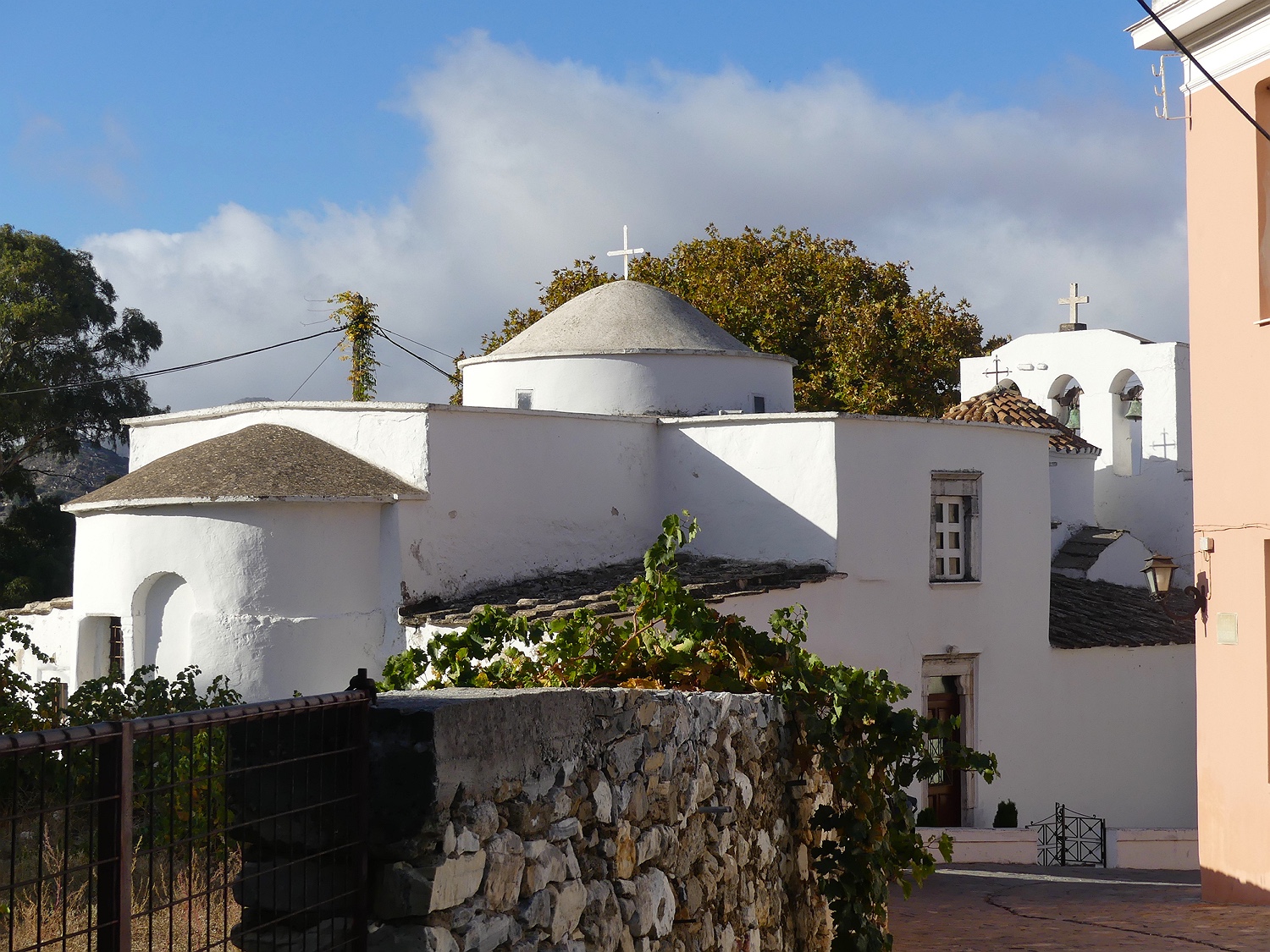
The church of Panagía Protóthronos, the village church of Chalki, was originally an Early Byzantine basilica, which was converted into a cross-domed church in the 10th century.
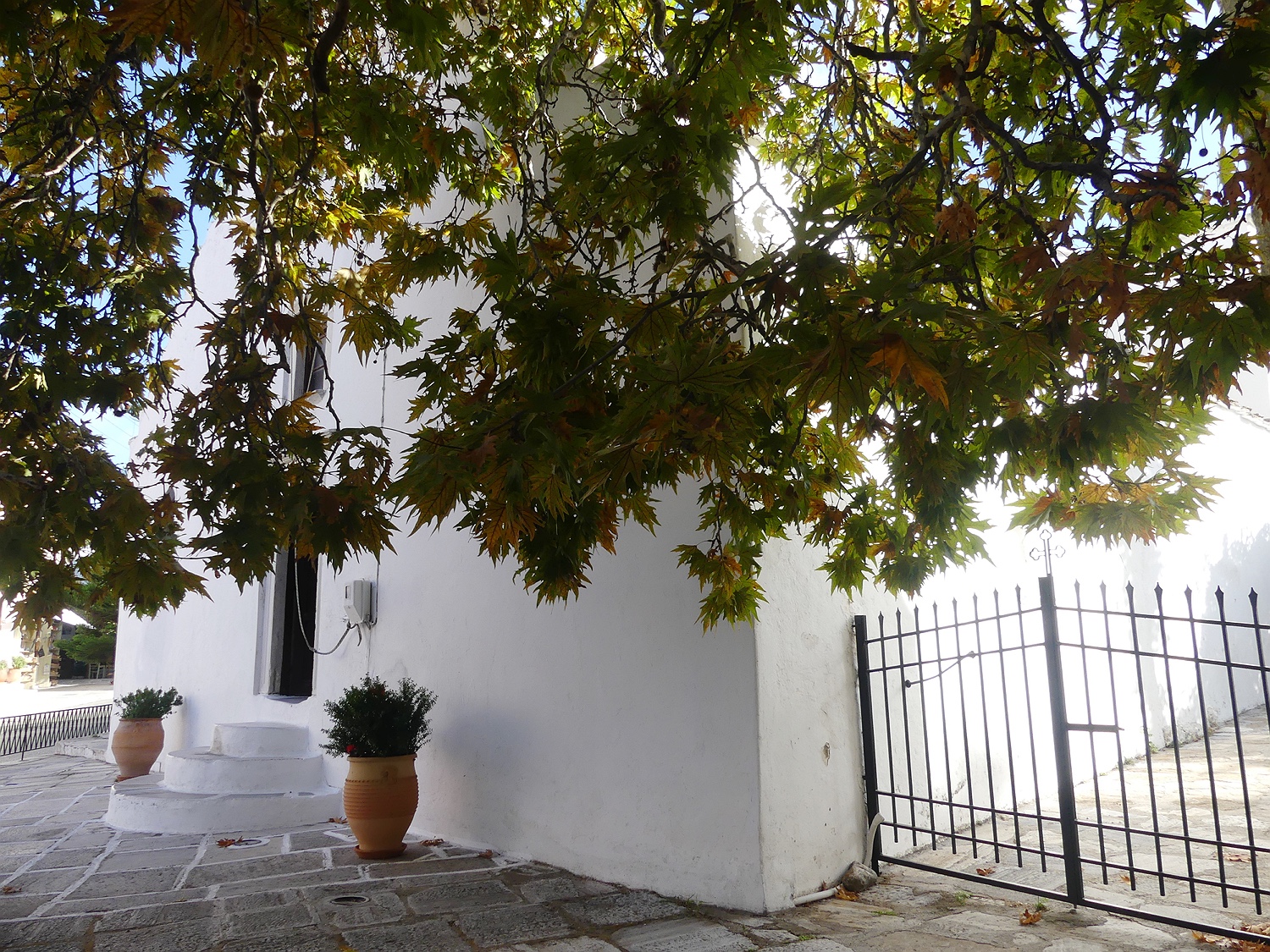
An impressive plane tree stands in front of the church.

inside: looking towards the altar wall

looking back towards the entrance
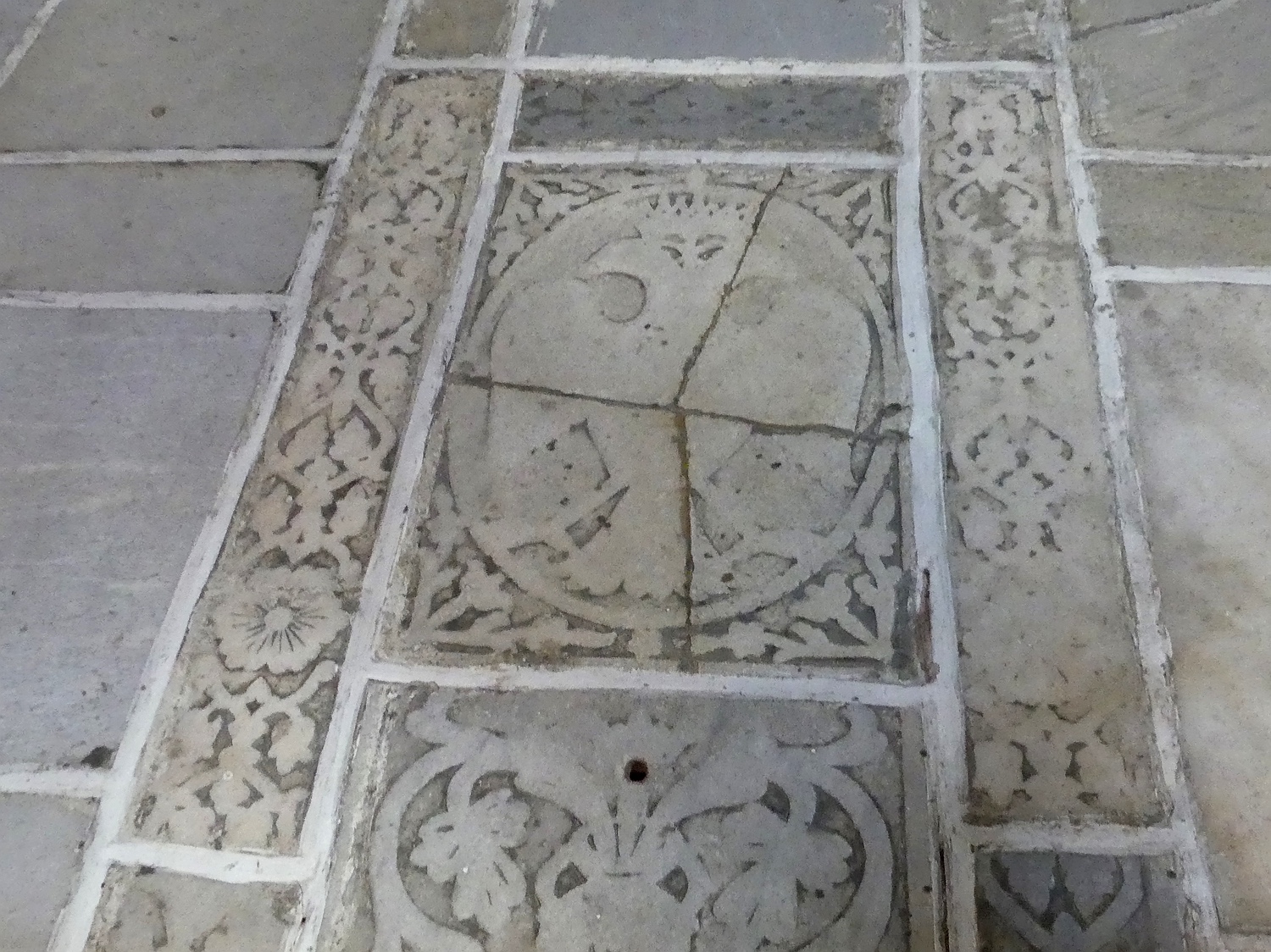
The floor is covered with large marble slabs; the Byzantine double-headed eagle is carved into the centre one.
The church of Protóthronos contains very important wall paintings from five phases, the first of which can be dated to the Early Christian period; these are depictions of apostles and St Isidore in the lower part of the apse. The second phase, of which only a few remnants remain, dates from the time of iconoclasm and includes a depiction of a cross in the sanctuary. The third phase includes the murals in the side arms of the cross (under the barrel roofs and on the upper walls) as well as an older, uncovered and removed painting in the central dome. These murals were probably painted in 1052, when, as an inscription testifies, the church was remodelled. Shortly afterwards, in the late 11th century, the dome was overpainted with new murals (which were removed to expose the older layer and then reapplied); these 4th phase paintings also include images in the northern chapel. The Deesis in the apse and the depiction of the Annunciation of the Lord on the south wall of the sanctuary can be dated to a 5th phase (13th century).

very old Early Byzantine mural painting of St Isidore in the apse of the Panagía Protóthronos; from Wikipedia
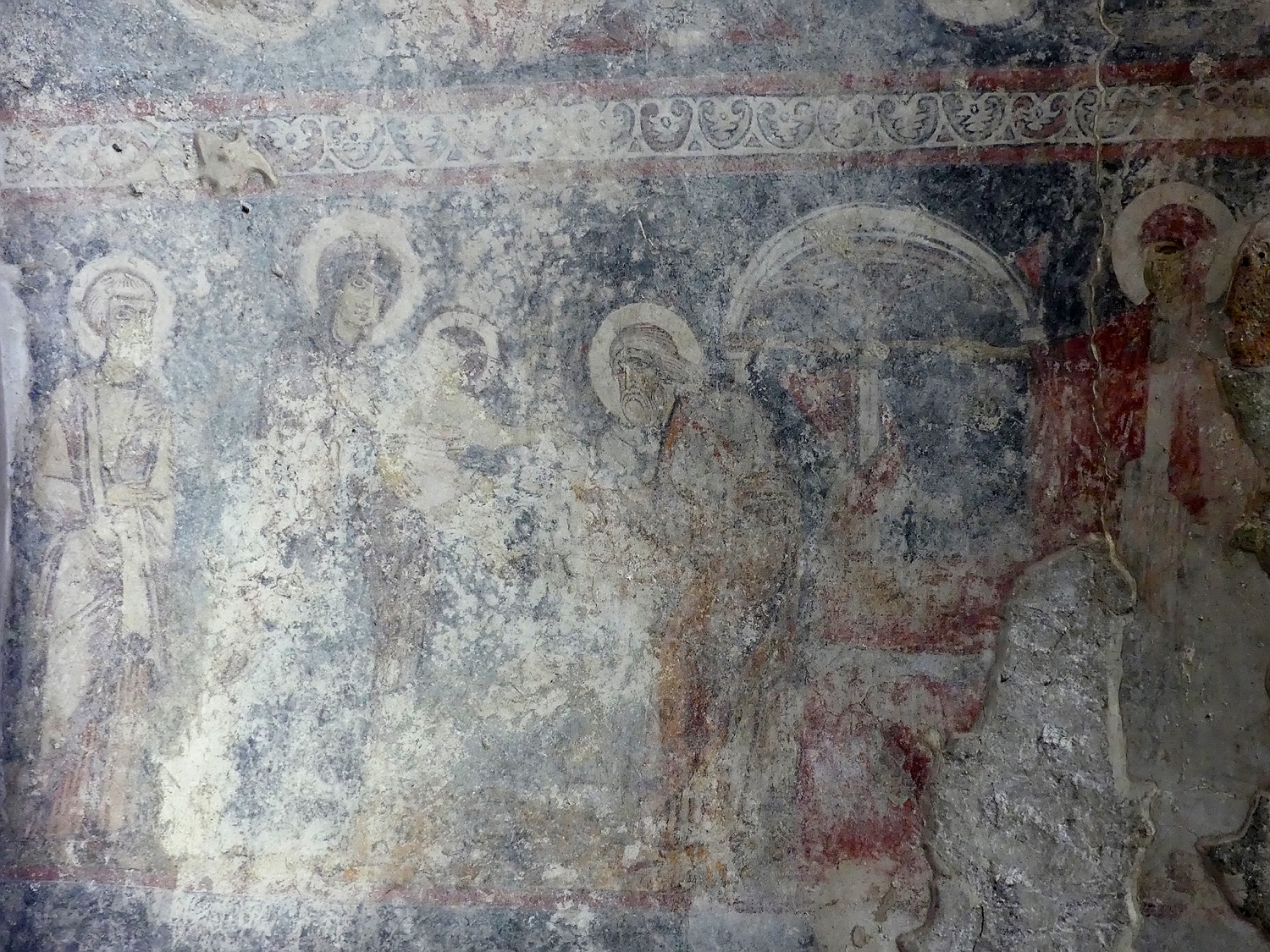
The paintings in the side arms of the cross next to the central dome were made in the 11th century. They are depictions of the life of Christ, here the Presentation in the Temple.
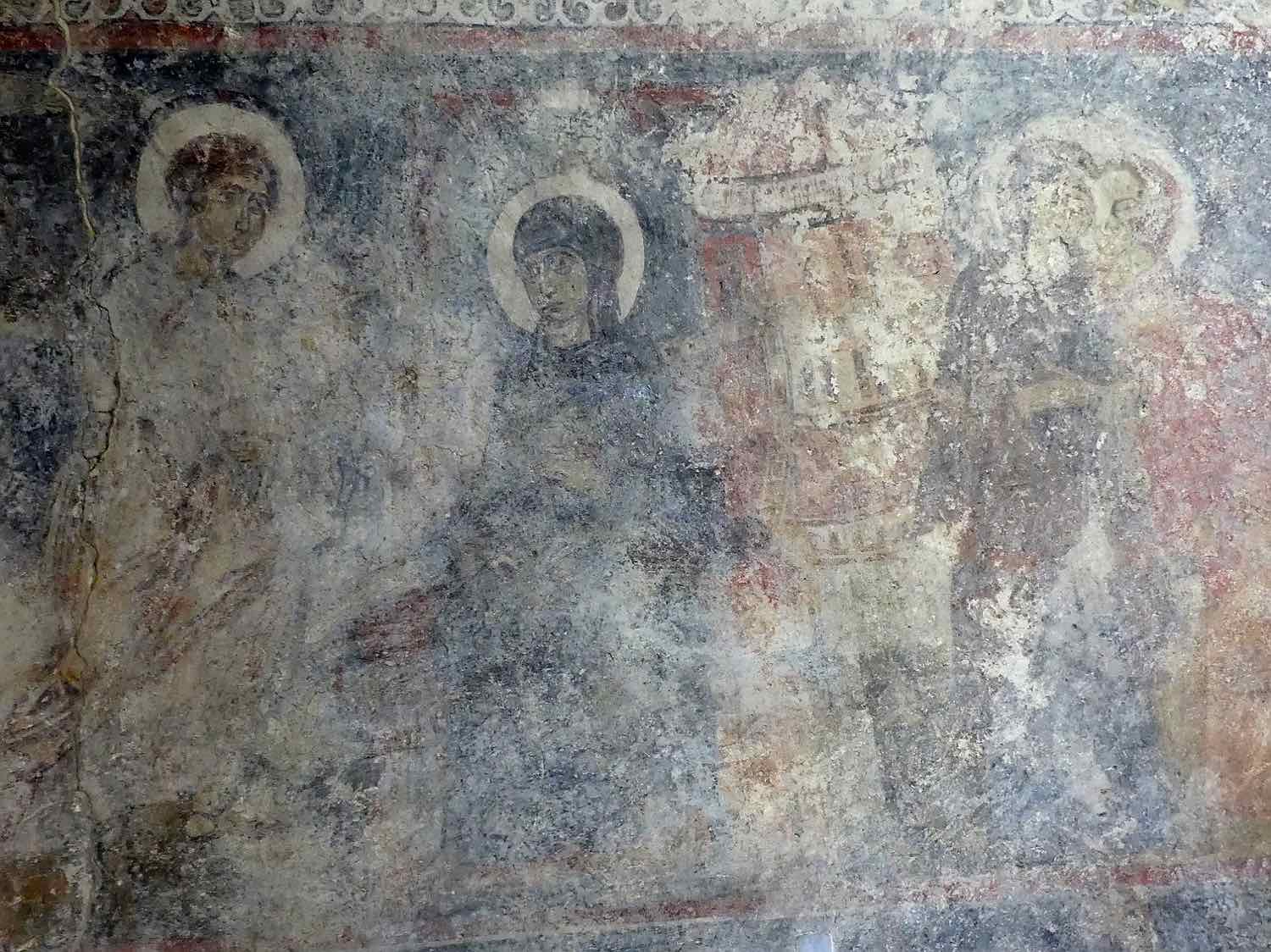
here the Annunciation of the Lord (left) and the Visitation of the Virgin Mary (right).
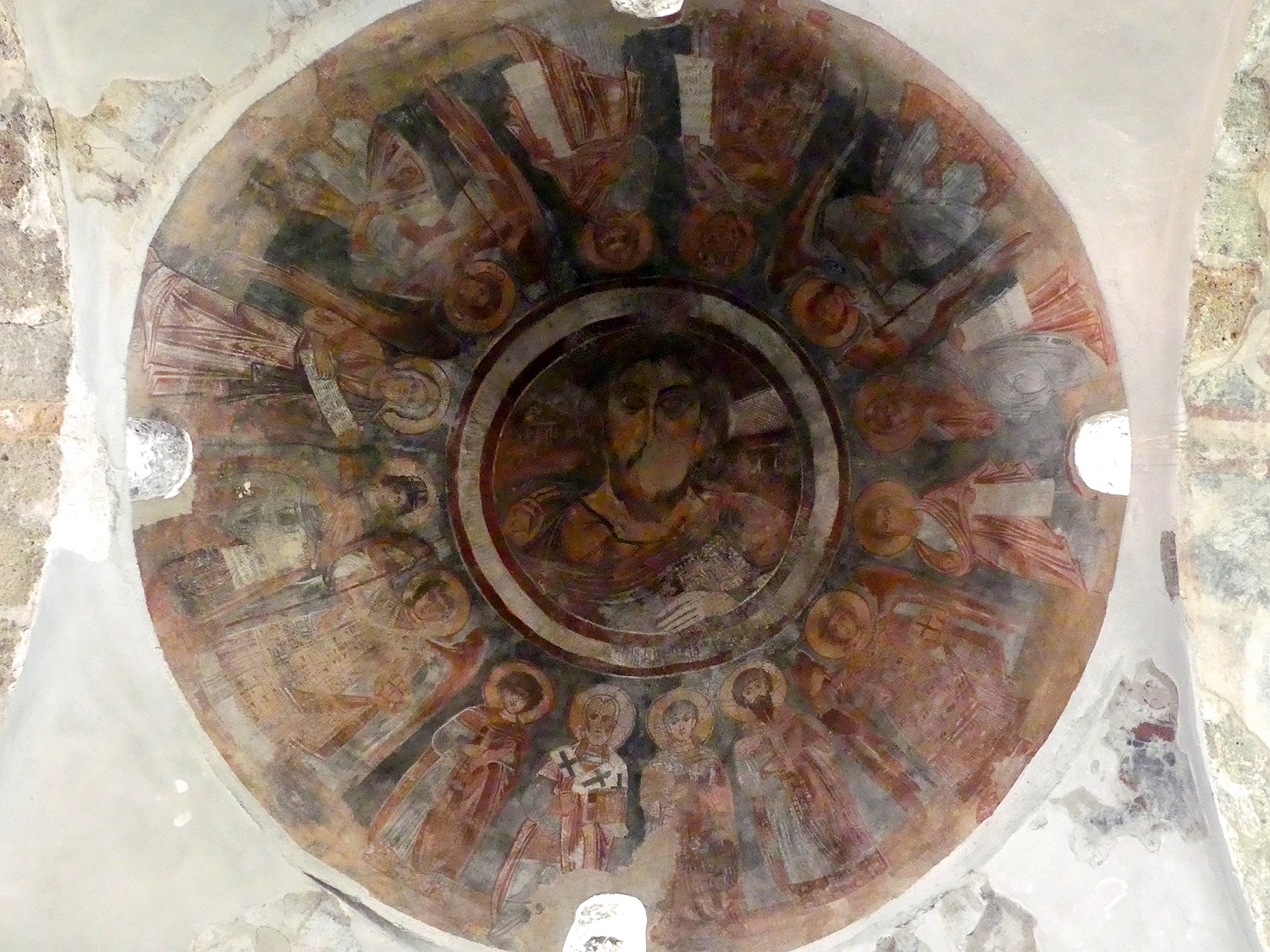
The current decoration of the central dome dates from the late 11th century. The Pantocrator is surrounded by fourteen figures: the four archangels Uriel (below left), Gabriel (above left), Michael (above right) and Raphael (below right), eight prophets: Jeremiah, Habbakuk, David, Zephaniah, Elijah, Daniel (clockwise, starting to the left of Uriel) and four saints (very unusual for such a representation with the Pantocrator in the dome): St George, St Nicholas, St Dimitris, St Theodore (below from right to left). The execution is rather stiff and conservative, as is typical for this period.
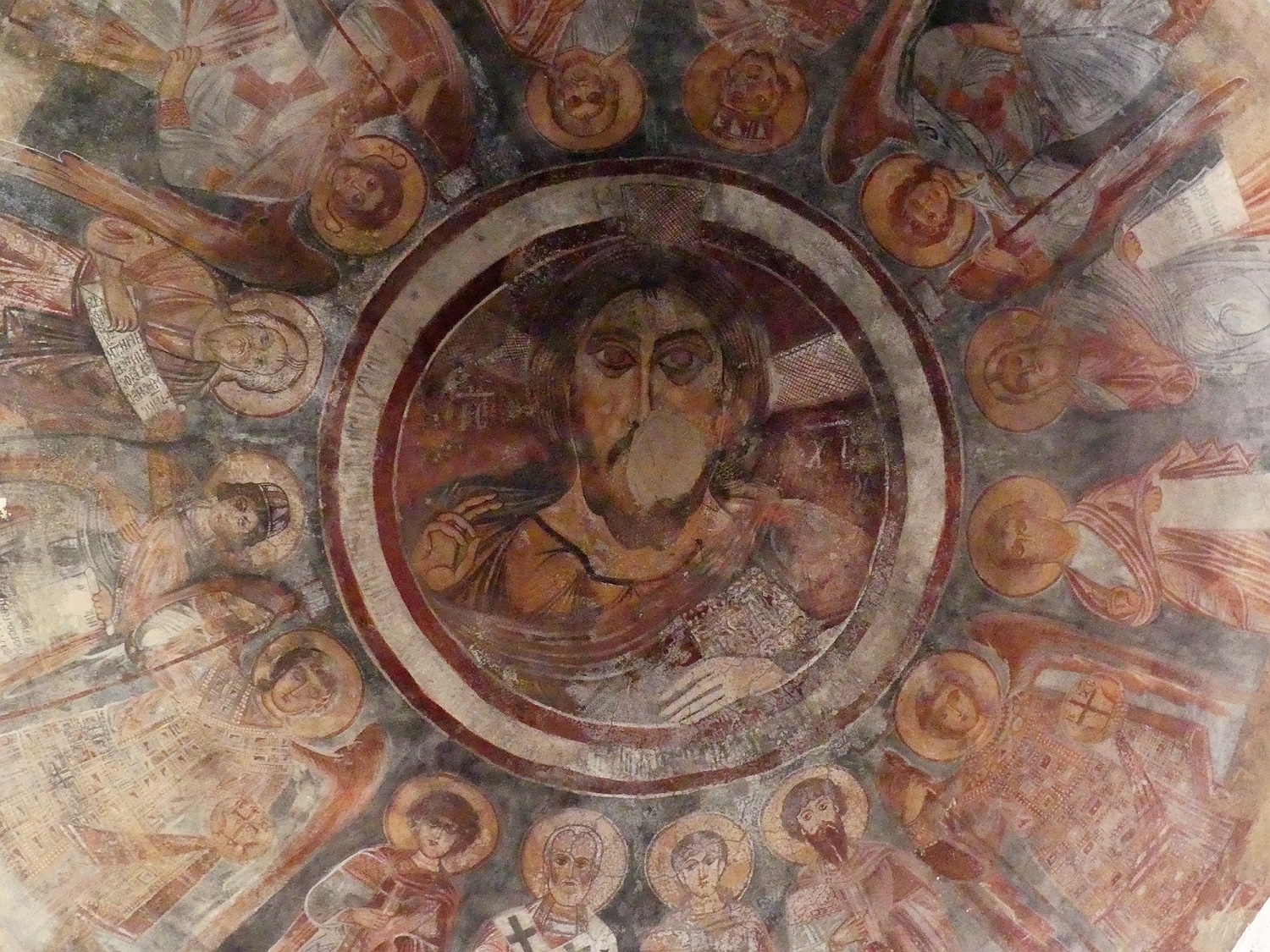
the Pantocrator
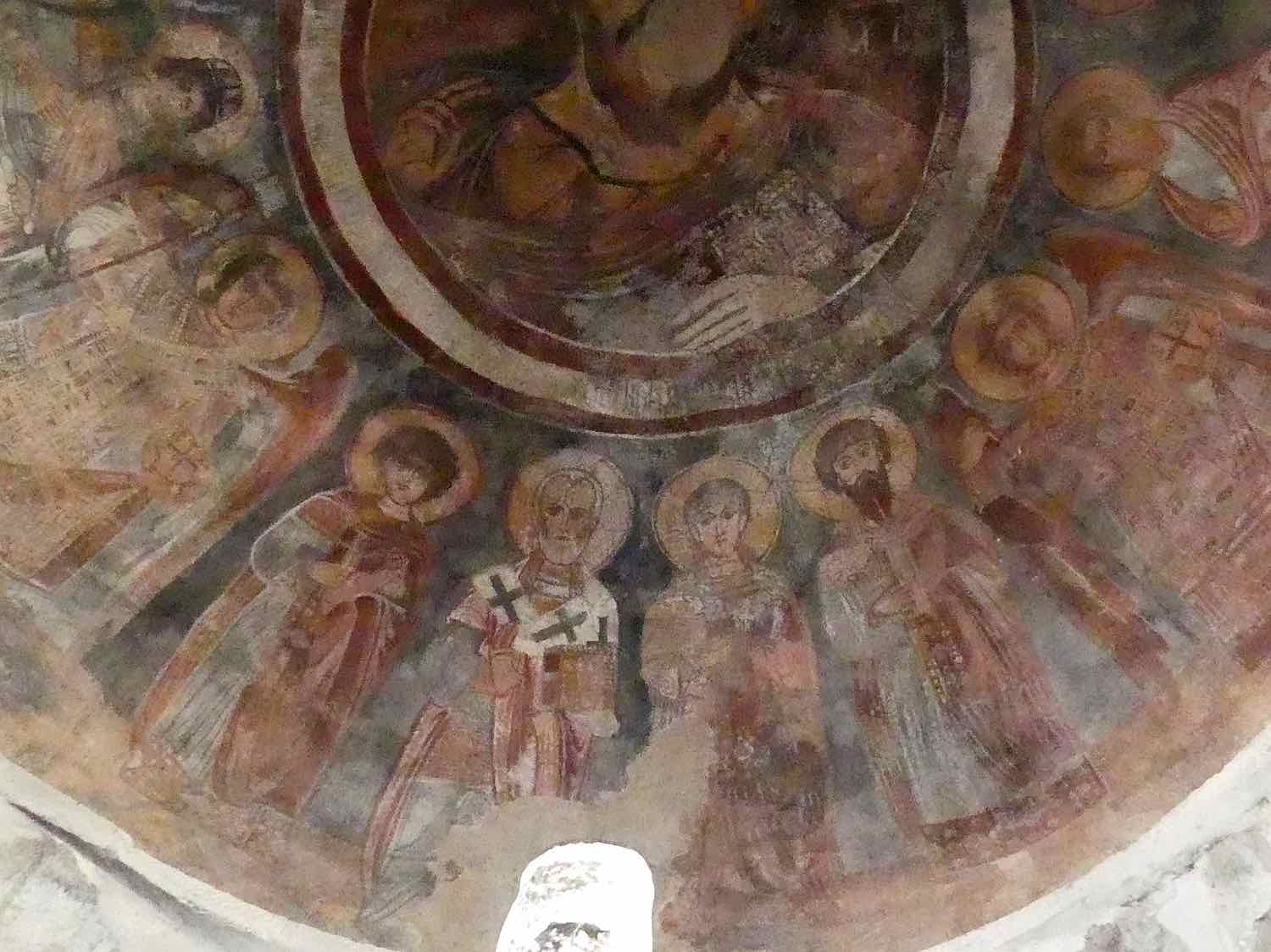
The four saints Theodor, Dimitris, Nikolas und Georg (from left to right).
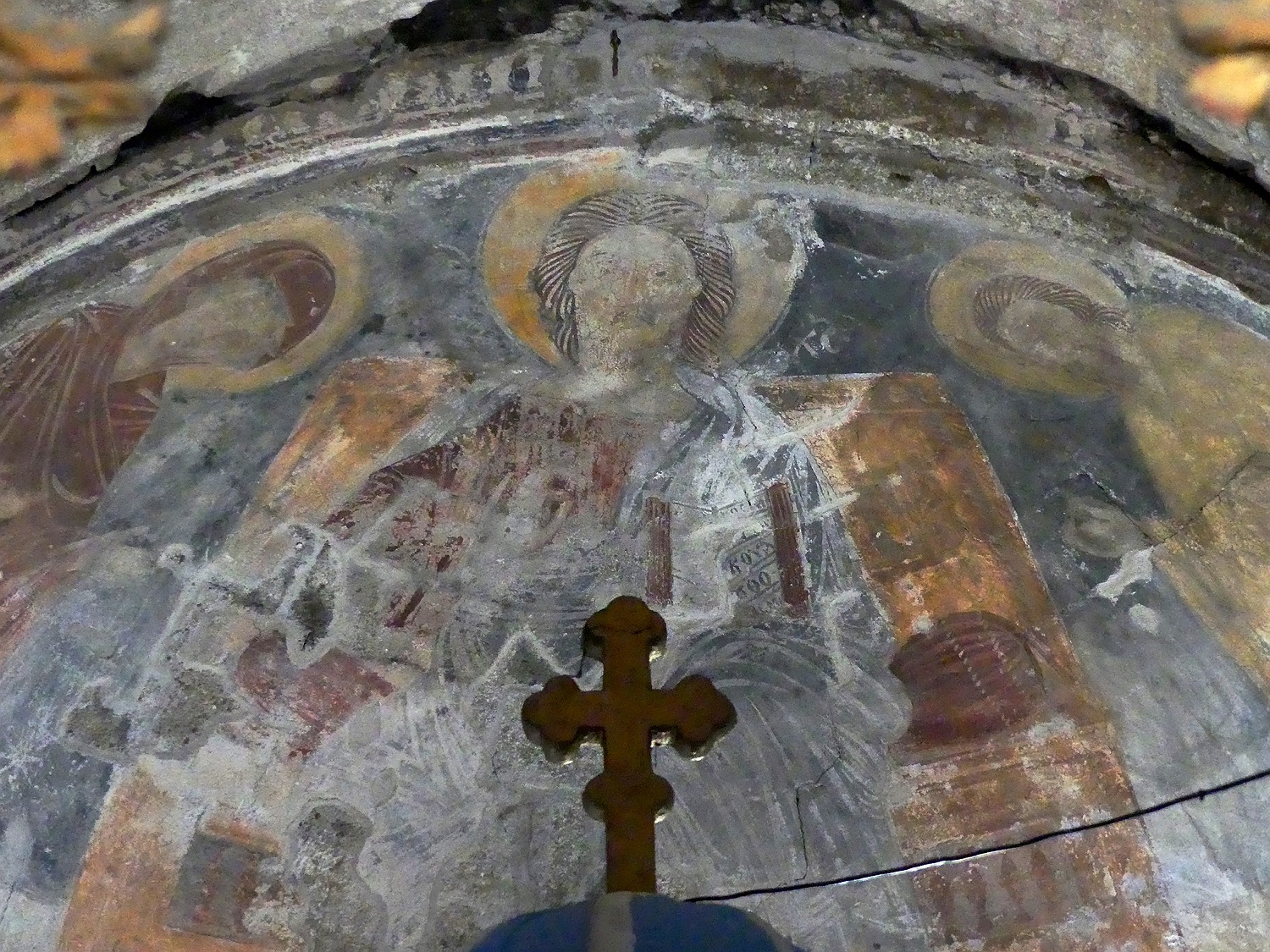
The Deesis, as usual in the apse, dates from the 13th century. The very large depiction of Christ in the centre is, as usual, surrounded by Mary on the left and John the Baptist on the right; these two serve as intermediaries for the petitions.

Also from the fifth phase (13th century): the Annunciation of the Lord (in keeping with the name of the church) on the south wall of the sanctuary, a touching, lively and expressive image. Mary is holding a spindle, an unusual motif. From Wikipedia
Without a doubt, the church of Panagía Protóthronos, located in the centre of Tragaía, is an impressive example of Byzantine architecture and art and well worth a visit.
continue: Agia Kyriaki near Apiranthos
see also:
- Sights and monuments
- Churches and monasteries
- The history of Naxos
- Naxos in the Byzantine era
- The Byzantine churches of Naxos
- The Byzantine murals
Quelle: “Panagia Protothrone at Chalki” von Nicos Zias, in: “Byzantine Art in Greece – Naxos”, editor Manolis Chatzidakis; G. Rayas & Co. G.P. – Melissa Publishing House, 1989, Athens